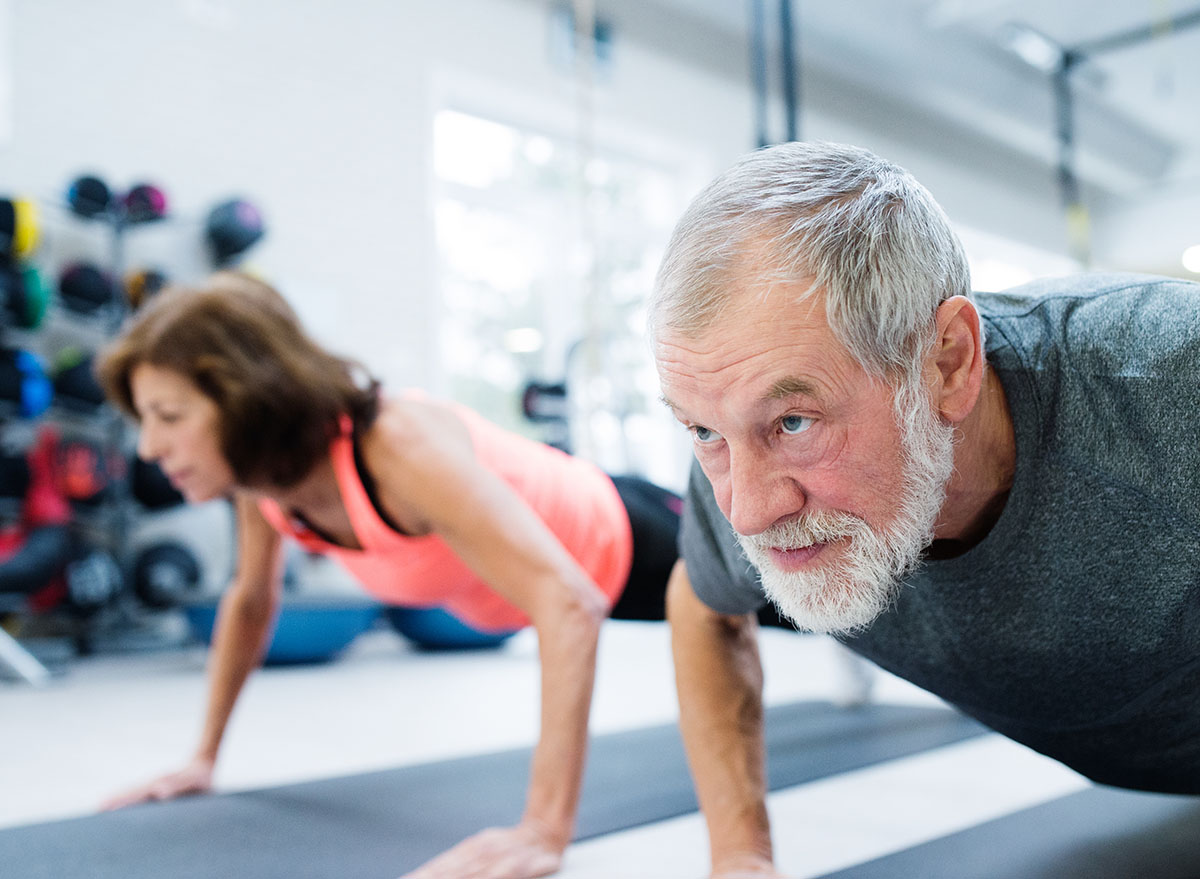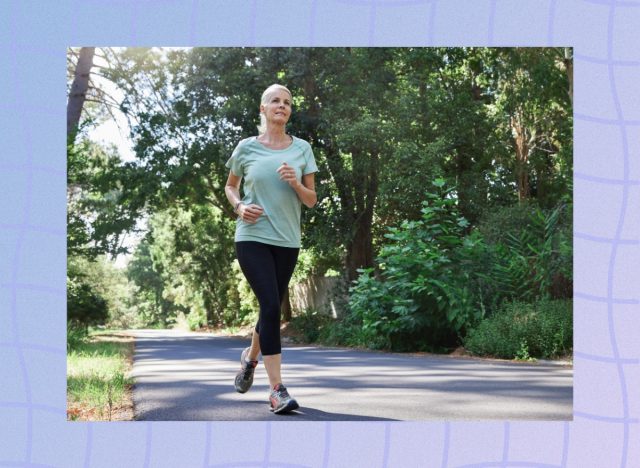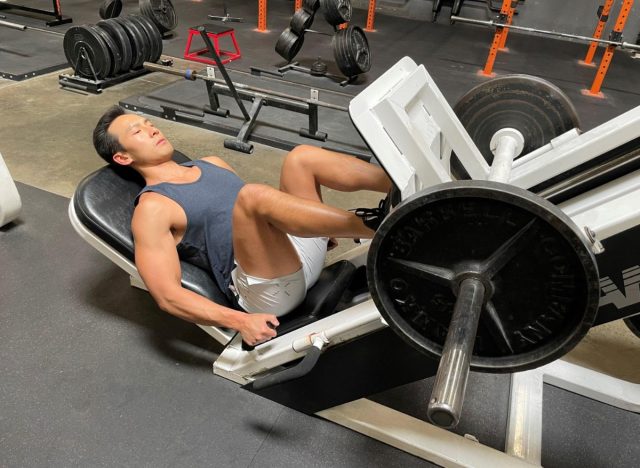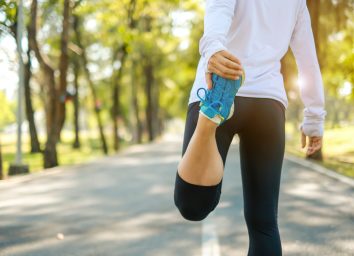Morning Exercises You Should Skip After 60, Say Fitness Experts

As we've reported time and again at ETNT Mind+Body, when you reach your 50s, 60s, and beyond, it's important to ramp up your exercise, and one of the best things you can possibly do to counter the inexorable loss of muscle mass and mobility you experience while aging is to embrace strength training. Also, if you shifted your exercise to the morning hours, it can do wonders for your health, your mood, your productivity, and even your lifespan.
In addition to burning fat earlier—which leads to an "after-burn" effect that continues after your workout—you'll be laying the groundwork for a smarter day. According to a study published in the British Journal of Sports Medicine, morning exercise has also been shown to improve decision-making skills and overall cognition for the remainder of the day in older individuals, per this research published in the British Journal of Sports Medicine.
What exercises should you do? Well, you should try your hand at some hip bridges, some daily walks, some squats, and other strength-training exercises. What exercises should you avoid? Keep reading to learn what they are and why—all courtesy of top fitness professionals. And if you need more motivation to exercise (at any time of the day!), don't miss these Secret Tricks for Convincing Yourself to Exercise, Say Experts.
Running

"People in their older years may want to avoid running first thing in the morning, especially if they haven't always been a runner," says Steve Stonehouse, a USATF-Certified Run Coach and Director of Education for STRIDE. "That's not to say you can't train up to being a runner, but waking up and running on pavement without a lot of prior experience or properly warming up can have a lot of impact on your joints."
He advises those over 60 and older to walk or take a light jog. "Doing so on a treadmill can also help alleviate some of the impact of running outside," he says. And for more great exercise advice, don't miss the Secret Side Effects of Lifting Weights for the First Time, Says Science.
HIIT

"High-intensity interval training (HIIT) can be a great workout for many people, but when you are over 60, it can create a lot of wear and tear on your knees," says Caley Crawford, NASM-CPT, Director of Education for Row House. "The wear and tear on your knees is typically cause by the high-impact nature of the workout, including lots of jumping and moves like burpees. On top of that, HIIT workouts usually are comprised of exercises done fast, which can lead to poor technique and unnecessary wear and tear."
Instead, she advises you to find a form of cardio that spikes your heart rate in the same way, but without the impact. Examples of great cardio include the elliptical, the rowing machine, exercise bikes, and swimming. And for more amazing exercise advice, don't miss the Unexpected Side Effects of Working Out in the Morning, Say Experts.
Floor Exercises

"When working with clients who tend to be older, I try to limit how many floor exercises they do, especially early in the morning," says Jack Craig, CPT, of Inside Bodybuilding. "With age, spinal flexibility suffers, which means a person can have a hard time getting up from laying down on the floor. Prolonged time on the ground can cause lasting injury or health problems, so it's best to avoid these types of exercises altogether if the client cannot get up on their own."
He singles out crunches as a big no-go exercise. Now, while there are so many better ways to work your core than doing crunches—for people of all ages—this is especially the case for the over-60 crowd. "I would limit how many abdominal crunches they do," he says. "This can also include floor pushups, mountain climbers, and planks. That's not to say that older people shouldn't do ab exercises. In fact, they can do these from a semi-elevated position by putting their forearms on a stool, the couch, or bedside. That way, they can use the elevated surface to help them stand straight once more."
The Leg Press and Any Seated Abs Machine

"For people that are in their 60s and older, there are many machine exercises that they should avoid," says Kate Meier, PT, a Certified USA weightlifting level 1 coach, a Certified CrossFit level 1 coach, and a senior editor at Garage Gym Reviews. "Elderly people tend to gravitate to using more machines because they seem safer but some of them may not be as helpful as they think. As people get older balance becomes very important to work on and maintain. Using machines takes away the body's need to stabilize the weight and it is the stabilization that improves balance."
If you use free weights, she says, it will promote better range of motion and stability. However, she singles out two machines as the worst offenders.
The leg press: "This machine will target the leg muscles and allow you to lift a heavy load but because of the seated position it puts the lumbar in a flexed and compromised position every time the knees come it and when you push back out that position leaves the low back unprotected. A safer alternative would be a box squat."
Any Seated Abdominal machine: "These put the spine in dangerous positions and take the body's ability to evenly distribute the load. The worst one is the machine where the person sits and then twists their hips back and forth. The torque and shearing forces put on the vertebrae can cause damage over time. For people in their 60s and older core exercises should be mainly body weight and involve stabilization. Planks and supermans are two great movements that are safe and will engage the core properly." And for one exercise move you should do, make sure you're aware of The Single Greatest Weightlifting Move for Shedding Pounds, Says Science.








